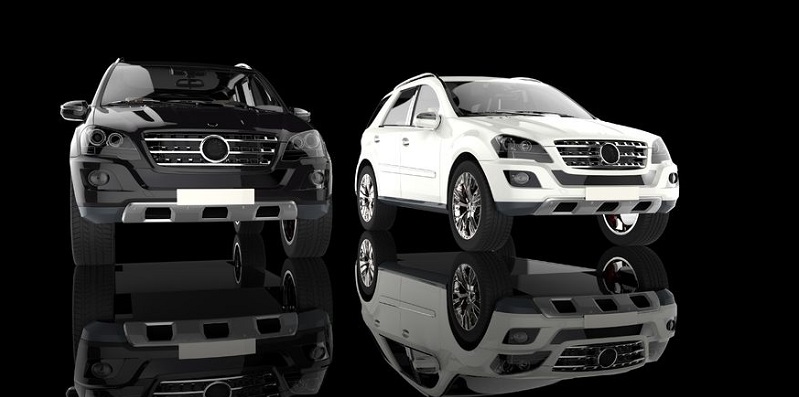Size and Price mean safety when it comes to cars. An IIHS report shows that, when involved in an auto accident, big luxury vehicles are the safest for drivers. Minicars can be 100 times more dangerous.
Tiny Cars Dwarf Larger Models in Driver Death Rates
When it comes to picking the safest car for you and your loved ones, the best advice might be to go big or stay home.
Vehicle size and price tag are the clearest factors that divide the most-survivable cars and trucks from the most deadly, according to a recent study by the Insurance Institute for Highway Safety.
The institute, which is commonly called by its abbreviation, IIHS, is a favorite tagline in TV commercials for new cars and trucks branded with its annual “Top Safety Picks” awards. It bases the safety picks on early testing and safety features such as the number of airbags and type of brakes.
The true measures of these new cars and trucks, though, won’t be clear for several years, when they have established a track record for relative safety or danger. As a result, the recent report looks at records for vehicles from 2014, and their model equivalents from 2011, 2012, 2013, and boils down their histories to the grimmest, clearest safety statistic of all: driver deaths.
The report focused on how changes in the national economy can affect driving habits and auto accident fatalitie but exposed the underlying safety difference between big and small vehicles
Tiniest Cars Have the Highest Death Rates
The rates of driver deaths show that the smallest cars and trucks are, in fact, the most dangerous ones. Five of the 10 most-dangerous vehicles are minicars and three are small cars. The smaller vehicles don’t protect their occupants as well as larger cars, so their place on the bad list isn’t surprising, IIHS said.
Automotive industry and consumer magazine MotorTrend, in reporting the data, pointed out that four-door minicars had an average of 87 deaths per million registered vehicle years, the highest of any category. Four-wheel-drive luxury SUVs performed the best with an average of just six driver deaths. Overall, vehicles averaged a 30 death rate.
A Zero Rating Not Always Absolutely Zero Deaths
The death rate measures the number of driver deaths per million registered vehicle years. For example, 250,000 4-year-old Model-Ts with one driver’s death equals a rating of 1. More cars and more road time might result in less than a 1 rating, a zero. Only drivers’ deaths were counted because every car has a driver, but not all have passengers.
The Worst of the Deadly Vehicles
Here are the vehicles with the worst death rates and their classes:
- Hyundai Accent sedan, 4-door car, mini, 104 driver deaths
- Kia Rio sedan, 4-door car, mini, 102 driver deaths
- Scion tC, 2-door car, small, 101 driver deaths
- Chevrolet Spark, 4-door car, mini, 96 driver deaths
- Nissan Versa, 4-door car, mini 95 driver deaths
- Ford Fiesta sedan, 4-door car, mini, 83 driver deaths
- Kia Soul station wagon, small, 82 driver deaths
- Dodge Challenger 2-door car, large, 81 driver deaths
- Nissan Titan Crew Cab short bed 4WD, pickup, large, 73 driver deaths
- Nissan Sentra, 4-door car, small, 72 driver deaths.
The Safest Vehicles; Zero Driver Deaths
Here are the vehicles with zero death rates and their classes (in this case, alphabetically):
- Audi A6 4WD, luxury car, large, 0 driver deaths
- Audi Q7 4WD, luxury SUV, large, 0 driver deaths
- BMW 535i/is 2WD, luxury car, large, 0 driver deaths
- BMW 535xi 4WD, luxury car, large, 0 driver deaths
- Lexus CT 200h, luxury car, midsize, 0 driver deaths
- Lexus RX 350 2WD, luxury SUV, midsize, 0 driver deaths
- Mazda CX-9 2WD SUV, midsize, 0 driver deaths
- Mercedes-Benz M-Class 4WD, luxury SUV, midsize, 0 driver deaths
- Toyota Tacoma Double Cab long bed 4WD, pickup, small, 0 driver deaths
- Volkswagen Tiguan 2WD, SUV, small, 0 driver deaths.
You can search for your own model’s rating here.
Worst Offenders Made Improvements
Despite the increase in the overall rate, the worst vehicles actually saw some improvement, IHHS said. It pointed to the Hyundai Accent, which dropped its death rate from 120 for its 2011 model to 104 for the 2014. The newer car also showed improvement in its crash test results. The Kia Rio, which like the Hyundai Accent was redesigned in 2012, saw its death rate crash drop from 149 to 102.

